Results 8,941 to 8,950 of 12096
Thread: Anandtech News
-
12-13-18, 10:19 AM #8941
Anandtech: SanDisk Ultra microSDXC UHS-I 400GB Memory Card Capsule Review
Almost all content capture devices employ memory cards (flash-based removable media) for storage. Hand-held consoles and many other computing systems (PCs as well as smartphones) also employ them for augmenting the available storage capacity. Last year, we saw the introduction of high-capacity memory cards (more than 256GB) in the retail market. We take a detailed look at one of the first such cards today - the SanDisk Ultra microSDXC UHS-I 400GB.
More...
-
12-13-18, 11:52 AM #8942
Anandtech: IO Data Announces M4K651XDB: A 4K 64.5-Inch Display with HDR10
As the world’s largest display suppliers are primarily focusing on popular sizes of LCDs, such as 27 or 32 inches, the smaller players tend to address and fulfil the demands of smaller niche markets.
IO Data, a Japanese supplier of monitors, this week formally announced its first 64.5-inch display. The M4K651XDB is aimed at a variety of applications, including desktop PCs, game consoles, and digital signage.
The IO Data M4K651XDB is based on a 64.5-inch ADS panel with a resolution of 3840×2160, 400 nits brightness, 1200:1 contrast ratio, 60 Hz refresh rate, 178° viewing angles, and a low 5-8 ms response time.
ADS panels are not used widely, but IO Data claims that its monitor can reproduce 1.07 billion colors (with 10-bit color input), so we are most probably dealing with an IPS-class panel with rather decent capabilities. Meanwhile, the manufacturer does not make mention of the color gamuts that the LCD supports. Given the fact that this is a PC monitor, sRGB support is a must, though there are no official claims about that.
The key selling feature of the M4K651XDB display is naturally its size that is 10 inches larger compared to 55-inch LCDs found in Japan and some other countries. The large dimension is also a double-edged sword for the monitor, because it has a rather large 0.3718 mm2 pixel area resulting in a pixel density of only 68.31 PPI, which is similar to that of 31.5-inch Full-HD displays that have never gained popularity. Obviously, IO Data’s display will hardly be a good choice for people looking for smooth fonts and pixel-level accuracy.
One of the notable features that the M4K651XDB has is an integrated processor that can upconvert SD and HD content to the LCD’s native Ultra-HD resolution without substantial blurring. The same chip is also allegedly responsible for the monitor’s Enhanced Color function that can improve colour saturation of an image. Finally, the display can also automatically adjust brightness according to environmental conditions, so the device is probably equipped with an ambient light sensor.
Like many modern monitors, IO Data’s M4K651XDB supports HDR10 transport, though the quality of the HDR experience is something that remains to be seen give the display’s peak brightness of only 400 nits. Meanwhile, despite being positioned as a solution for gaming, the LCD does not support any dynamic refresh rate technologies.
Moving on to audio capabilities of the monitor. The M4K651XDB is outfitted with two 10 W stereo speakers, a 3.5-mm headphone jack, and an optical connector.
As for general connectivity, the LCD features one DisplayPort 1.2 input, one HDMI 2.0 input, as well as two HDMI 1.4 inputs. The HDMI ports fully support CEC, so the remote bundled with the display can control various consumer electronics devices and therefore the 64.5-inch beast can be used as a regular TV once attached to a BD player or an STB.
Unfortunately, the only USB connector on the monitor seems to be able to serve as a maintenance port for firmware updates as it cannot serve as USB hub, and likely lacks any OS or hardware that would be capable of playback of media off external storage.
IO Data’s M4K651XDB will ship in January at an MSRP of ¥168,000 ($1,483) without taxes. Given the features of the product, this price seems quite high. In the meantime, the manufacturer covers the display with a five-year warranty and guarantees that the backlight will operate for 30,000 hours, which equals to ~3.42 years of continuous operation (Yes that is a weird selling point).IO Data's 64.5-Inch UHD Display M4K651XDB Panel 64.5" ADS Native Resolution 3840×2160 Maximum Refresh Rate 60 Hz Response Time 5 - 8 ms Brightness 400 cd/m² Contrast 1200:1 Viewing Angles 178°/178° horizontal/vertical Pixel Pitch 0.3718 mm2 Pixel Density 68.31 ppi Color Gamut 1.07 billion Inputs 1 × DisplayPort 1.2
1 × HDMI 2.0
2 × HDMI 1.4Outputs 3.5 mm headphone output
SPDIFUSB Hub None Audio 10 W × 2 Power Consumption (idle/active) Idle: 0.5 W
Typical: 89.4 W
Max: 225 WModes Web, Photo, Movies, etc. Launch Price ¥168,000 ($1,483)
Related Reading:
- NVIDIA Announces Big Format Gaming Displays: 65-inch 4K@120Hz HDR Display with G-Sync & More
- JapanNext JN-VC490UHD and JN-VC550UHD: 49-55 inch, Curved 4K, FreeSync, HDCP 2.2, Under $900
- Philips Preps 499P9H Curved 49-Inch 5K Display with USB-C Docking & Webcam
- Dell U4919DW Curved Display Unveiled: 49 Inches, 5120x1440
- Philips Unveils 43-Inch 4K Gaming LCD with DisplayHDR 1000, DCI-P3, FreeSync
Source: IO Data (via Hermitage Akihabara)
More...
-
12-13-18, 01:11 PM #8943
Anandtech: GIGABYTE Launches R161-Series Overclocking Servers: 1U, Core X, Liquid Coo
GIGABYTE has released its first servers based on overclockable Core X-series processors that offer a higher single-thread performance when compared to regular server CPUs. The new Overclocking Servers R161-series will be just what the doctor ordered for those who need to maximize per core performance and software investments.
GIGABYTE’s R161-series servers support Intel’s Core X-series processors in LGA2066 packaging with up to 18 cores and are based on the Intel X299 chipset. Each R4 socket is outfitted with apparent high quality 11-phase VRM comprising of solid-state capacitors to ensure high overclocking potential and long-term stability and reliability.
The machines are outfitted with eight DIMM slots that support up to 128 GB of overclocked DDR4 memory, two M.2-2280 slots for PCIe 3.0 x4 SSDs, two U.2. connectors for 2.5-inch PCIe SSDs, four SATA connectors for 2.5-inch storage devices (alternatively, an SAS add/on card can be used for SAS SSDs/HDDs), and two PCIe 3.0 x16 low-profile slots (connected to the CPU through a PCIe switch and requiring a riser car) for SSDs, network controllers or other components.
As for I/O capabilities, the servers feature two GbE ports controlled by the Intel I350-AM2 silicon, one MLAN port (for the Aspeed AST2500 BMC), four USB 3.0 connectors, a D-Sub VGA output, and an RS-232/COM port. The devices can be optionally outfitted with GIGABYTE’s CTM000 TPM2.0 module.
GIGABYTE’s lineup of Overclocking Servers consists of two R161 machines powered by the same MR11-LC0 motherboard. Designed for extreme overclocking, the R161-R12 comes equipped with a liquid cooling system for the CPU featuring 11 high-speed fans (at 23,000 – 25,000 RPM) and a redundant 1.1 kW PSU. The manufacturer claims that the Core i9-7980XE can be overclocked all the way to 4.6 GHz using said machine. Meanwhile, the more moderate R161-R13 server is outfitted with air cooling comprising of eight high-speed fans (at 23,000 RPM) as well as an 850 W power supply.
Servers running overclocked CPUs are not common, but they can be used in a wide variety of use-cases. Furthermore, both AMD and Intel release their EPYC and Xeon processors with reduced core counts running at higher clocks and featuring larger per-core caches to maximize their single-thread performance.
High ST performance is important for a variety of applications, including HPC, electronic design automation, high-frequency trading, and other. Furthermore, since many applications (e.g., Windows Server, SQL Server, etc.) are licensed on per-core basis, high-frequency CPUs enable operators to maximize their performance and software investment per core. This is particularly important for parties that can afford using more machines and do not need to maximize density of their CPU and memory.
GIGABYTE’s R161-series Overclocking Servers are already listed and are available to select customers of the company. Prices are unknown.
Buy Intel Core i9-7980XE on Amazon.comGIGABYTE's Overclocking Servers R161 Series R161-R12 R161-R13 CPU Intel Core X, LGA2066 Memory 8 DDR4 DIMM slots
Up to 128 GB of DDR4-3200+ per boxGraphics/Management Aspeed AST2500 Storage Bays 6 × hot-swappable 2.5" bays Drives 2 × U.2 + 4 × SATA/SAS hot-swappable HDD/SSD SAS add-on SAS card RAID Intel RAID 0/1/10/5 M.2 2 × M.2-2280 slots Ethernet 2 × Intel I350-AM2 GbE
1 × GbE management LAN portExpansion Slots 2 × low-profile PCIe 3.0 x16 slots via CRS1024 riser card Internal I/O 3 × Power supply connectors
5 × SlimSAS connectors
2 × fan headers
1 × USB 3.0 header
1 × TPM header
1 × VROC connector
1 × Front panel header
1 × HDD back plane board header
1 × IPMB connector
1 × Clear CMOS jumper
1 × BIOS recovery jumperFront I/O 2 × USB 3.0
LEDs, buttonsRear I/O 2 × USB 3.0
1 × VGA
1 × COM (RJ45 type)
2 × GbE
1 × MLANCooling Liquid-cooling system
1 × 40-mm fans at 23,000 ~ 25,000 rpm8 × 40-mm fans at 23,000 rpm PSU 2 × 1100W redundant PSUs
80 PLUS Platinum1 × 850W PSU
80 PLUS PlatinumSystem management Aspeed AST2500 management controller
Avocent MergePoint IPMI 2.0 web interface:
Network settings
Network security settings
Hardware information
Users control
Services settings
IPMI settings
Sessions control
LDAP settings
Power control
Fan profiles
Voltages, fans and temperatures monitoring
System event log
Events management (platform events, trap settings, email settings)
Serial Over LAN
vKVM & vMedia (HTML5)
Related Reading:
- AMD EPYC for ATX Workstations: GIGABYTE MZ01-CE0 & MZ01-CE1 Motherboards
- AMD Launches High-Frequency EPYC 7371 Processor
- Immersion Server Liquid Cooling: ZTE Makes a Splash at MWC
Source: GIGABYTE (via Hermitage Akihabara)
Gallery: GIGABYTE Launches R161-Series Overclocking Servers: 1U, Core X, Liquid Cooling

More...
-
12-13-18, 01:11 PM #8944
Anandtech: EKWB Reveals Velocity: A Water Block for Custom LCS with RGB Lighting
Custom liquid cooling systems are built by hardcore enthusiasts who want to get absolutely no-compromise style and performance. Meanwhile, one of the trendiest features for enthusiasts introduced in the recent years, addressable and customizable RGB lighting, has so far only been supported by factory-built all-in-one liquid coolers. This week EKWB changed this by introducing its EK-Velocity, its first CPU water blocks with RGB LEDs.
EKWB’s EK-Velocity D-RGB CPU water blocks feature the company’s brand-new internal design that relies on a nickel-plated electrolytic copper cold plate covered with black acetal or transparent plexiglass. Besides, the water blocks use a reinforced mounting bracket with smaller screws for additional style.
The EK-Velocity D-RGB are outfitted with 24 LEDs that can be programmed using software from leading motherboard makers (ASUS Aura, MSI Mystic Lights, Gigabyte RGB Fusion, and ASRock Polychrome Sync) and is compatible external digital RGB controllers featuring a 3-pin LED connector.
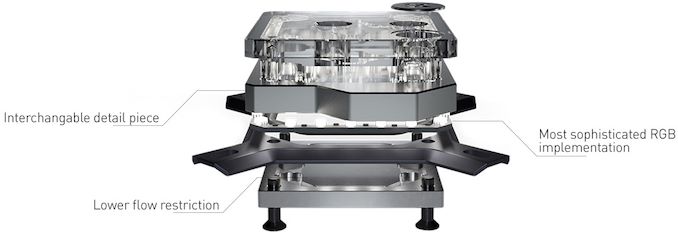
The manufacturer will offer versions of EK-Velocity D-RGB compatible with AMD’s AM4 as well as Intel’s LGA115x and LGA2011/2066 processors/platforms.
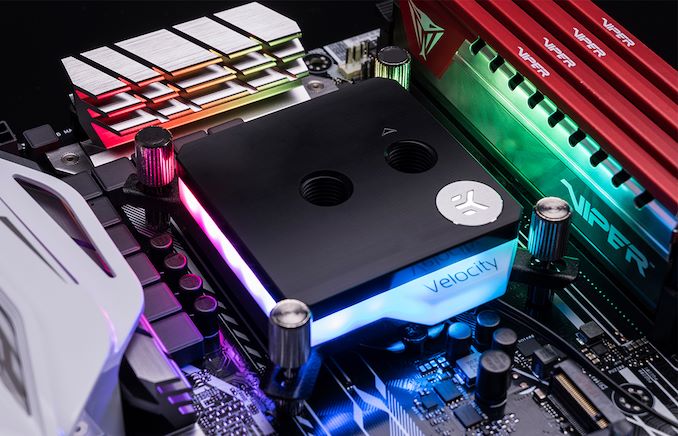
EKWB’s Velocity D-RGB water blocks are now available at €95 - €100 directly from the company and will hit shelves of various retailers across the world in the coming days and weeks, depending on the market.
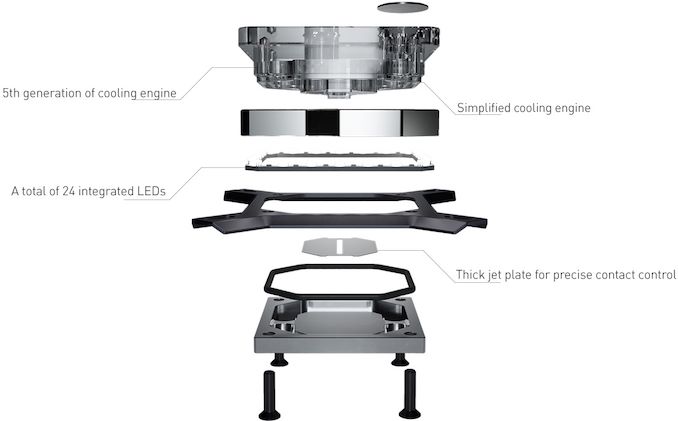
Related Reading:
- EKWB Announces EK-Vector RTX Water Blocks for GeForce RTX 2080 & RTX 2080 Ti
- Corsair Unveils Hydro H100i & Hydro H115i RGB Platinum LCSes with Mag Lev Fans
- ASUS Unveils ROG Ryujin AIO LCSes for AMD’s Ryzen & Ryzen Threadripper
- Cooler Master Announces MasterLiquid ML120L RGB and ML240L RGB CLC: Lighting Up The Night
- Deepcool Launches Captain EX RGB CPU Coolers with LED Lighting
Source: EKWB
More...
-
12-13-18, 02:47 PM #8945
Anandtech: ADATA Announces XPG Gammix S11 Pro: SM2262EN, 3D TLC, Up to 3.5 GB/s
ADATA on Thursday introduced its highest-performing SSD to date, featuring sequential read speeds of up to 3.5 GB/s and random read speeds of up to 390K IOPS. The enthusiast-class PCIe 3.0 x4 drive, whose formal launch had been expected for quite a while, is powered by Silicon Motion’s range-topping controller.
The ADATA XPG Gammix S11 Pro is based on Silicon Motion’s SM2262EN controller, which is a seriously revamped version of the SM2262 (eight NAND channels supporting up to 800 MT/s data transfer rates, four ARM Cortex-R5 cores, NVMe 1.3, LDPC ECC, RAID engine, etc.) that operates at higher clocks and features some additional firmware-based optimizations to drive performance up.
SMI officially introduced this controller in mid-2017, but the chip took a long time to see adoption as we’ve only recently seen SSD vendors use it. ADATA is one of the adopters of the SM2262EN that have decided to pair it with proven 64-layer 3D TLC NAND memory in a high-end SSDs. Over time, we expect the controller to be used with other types of flash as well.
The XPG Gammix S11 Pro drives come in 256 GB, 512 GB, and 1 TB configurations, all featuring a PCIe 3.0 x4 interface. The SSD is outfitted with the company’s aluminum heat spreader to ensure consistent performance (assuming that airflows in the PC case are organized properly).
Speaking of performance, ADATA’s numbers are similar to those published by Silicon Motion: up to 3.5 GB/s sequential read speed and up to 3 GB/s sequential write speed when SLC caching is used (data based on CDM benchmark), as well as up to 390K/380K random read/write 4K IOPS.
Moving on to endurance and reliability of the Gammix S11 Pro SSDs. The new drives are covered with a five-year warranty and are rated for 160 TB, 320 TB, as well as 640 TB to be written, depending on the SKU.
ADATA did not disclose when it plans to start sales of the XPG Gammix S11 Pro SSDs, but keeping in mind that competing products are already here, it is in the company’s best interest to start shipments of the drives as soon as possible.ADATA XPG Gammix S11 Pro Specifications Capacity 256 GB 512 GB 1 TB Model Number AGAMMIXS11P-256GT-C AGAMMIXS11P-512GT-C AGAMMIXS11P-1TT-C Controller Silicon Motion SM2262EN NAND Flash IMFT 3D TLC NAND Form-Factor, Interface M.2-2280, PCIe 3.0 x4, NVMe 1.3 Sequential Read 3500 MB/s Sequential Write 1200 MB/s 2300 MB/s 3000 MB/s Random Read IOPS 220K IOPS 390K IOPS Random Write IOPS 290K IOPS 380K IOPS Pseudo-SLC Caching Supported DRAM Buffer Yes, capacity unknown TCG Opal Encryption No Power Management DevSleep, Slumber (0.14 W). Warranty 5 years MTBF 2,000,000 hours TBW 160 TB 320 TB 640 TB Additional Information Link MSRP $110 $170 $270
When it comes to pricing, the 256 GB version has an MSRP of $110, the 512 GB SKU carries a price tag of $170, whereas the 1 TB model is set to be priced at $270.
Related Reading:
- The Silicon Motion SM2262EN SSD Controller Preview: Good And Bad Amplified
- ADATA XPG Gammix S11: SM2262 with Heat Spreader for Gamers
- The ADATA XPG SX8200 & GAMMIX S11 NVMe SSD Review: High Performance At All Sizes
Source: ADATA
More...
-
12-13-18, 04:02 PM #8946
Anandtech: ASUS Chief Exec Jerry Shen Steps Down
ASUS on Thursday announced the resignation of its long-time CEO, Jerry Shen. The step down follows a major change in the company’s smartphone strategy and precedes the company’s switch to a co-CEO management model. Meanwhile, Mr. Shen will be moving on to lead iFast, an AI+IoT startup, which will be partly funded by ASUS.
Starting from January 1, 2019, ASUS will be headed by two people: SY Hsu, who is currently heading up the company’s PC business, and Samson Hu, who is leading customer care services. The board of directors reportedly hopes that the co-leadership structure will enable the company to better compete against rivals and achieve its goals.
The co-CEOs have completely different skill sets and will therefore bring a unique combination of expertise to the table while avoiding internal competition. Just to put the particular people into context: SY Hsu certainly knows how to build products and how to manage the supply chain, whereas Samson Hu knows how to make these products more appealing to the customer and build competitive services. Considering the potential for disruption in the PC market because of the US-China trade feud, ASUS and other companies need to alter their supply chains and make their products more attractive to buyers because at some points they may have to increase their prices, which may lead to a lower demand.
In addition to the management reorganization, ASUS is shifting its smartphone strategy, as announced in mid-November. From now on, the company will focus on specialized smartphones aimed at gamers and ‘power’ users, as opposed to focusing on mainstream handsets. The company apparently wants to address gamers and other users with unique needs (and currently do not have a lot of choice) with its upcoming smartphones, though ASUS needs to detail its strategy going forward. The company will take a one-time charge of NT$6.2 billion (~$201 million) to cover losses from inventory, various costs, advance royalties, and other expenditures incurred by the strategy shift. The charge will affect the company’s profitability for the year, which will be considerably lower than expected, all of which weighs on Jerry Shen's tenure with the company.
When it comes to smartphones, ASUS already tried unorthodox approaches to this market: the company released a number of specialized handsets in partnership with Garmin between 2008 and 2010, then it tried to wed a smartphone and a tablet with its PadFone hybrid in 2012 – 2014. With its ZenFone launched in early 2014, ASUS has gained some presence on various markets where its brand has been strong for a long time. However, the company has found itself between a rock and a hard place when the competition between premium brands and new entrants like Xiaomi started to heat up in the recent years.
During Mr. Shen’s tenure as CEO, ASUS has accomplished a number of goals, introduced multiple new product lines (ZenBook, ZenPhone, Transformer, Vivo, etc.), and became Taiwan’s most valuable international brand. While he is usually credited as the father of ultra-affordable Eee PCs back in 2006, he will also be remembered as the man who split ASUS into three companies. Shortly after becoming the CEO of ASUS in 2008, he split the tech giant into three independent companies: ASUS, focused on branded products; Pegatron, focused on contract manufacturing of various electronics; and Unihan, focused on contract manufacturing of various non-PC components.
After 25 years with ASUS, Jerry Shen will lead iFast, a startup developing IoT products featuring AI (an AIoT startup, as ASUS puts it). ASUS intends to buy a 30% stake in the company and allocate NT$10 billion (US$324.22 million) on developing its AIoT projects in the coming years.
Related Reading:
- ASUS Announces ROG Phone Pricing: Available October 18th
- Sales of High Refresh Gaming Displays Skyrocketing, Curved Gaming LCDs Prevail
- ASUS Comments on Intel Shortages, U.S.-China Trade War
Sources: Business Next, DigiTimes, Engadget, Engadget China, Focus Taiwan
Image Source: Sogi.com.tw
More...
-
12-14-18, 07:33 AM #8947
Anandtech: Talking Snapdragon: An Interview with Cristano Amon, President of Qualcomm
It has been difficult to move around in 2018 without bumping into someone with a Qualcomm Snapdragon 845-powered smartphone. The success the company has seen in capturing most of the Android market has been exciting for the executives and helped accelerate a large number of use cases and experiences for users. With 2019 fast looming, and Qualcomm recently announcing both its new Snapdragon 855 Mobile Platform and a good chunk of its next-generation 5G partnerships, we were able to spend some time with Cristiano Amon, President of Qualcomm, about recent developments and upcoming opportunities for the company.
More...
-
12-14-18, 08:34 AM #8948
Anandtech: Mike Rayfield, General Manager of AMD’s RTG, to Resign by Year’s End
Mike Rayfield, senior vice president and general manager of AMD’s Radeon Technologies Group, will leave the company by the end of the month to spend more time with his family. David Wang will head the business unit while the company is looking for a new GM for RTG, which is left without a formal leader for the second time in one year.
?Mike Rayfield, who previously led NVIDIA’s Tegra business unit and Micron’s mobile storage business unit, became the business lead of RTG serving as SVP and GM of the group.
“Mike is retiring at the end of the year,” confirmed AMD in an email. “He has made the decision to spend more time with his family and pursue his personal passions. David Wang will be interim lead for Radeon Technologies Group while we finalize search for a new business leader.”
David Wang, a renowned GPU engineer who worked at ATI/AMD from 2000 to 2012, contributing to all GPUs starting from the R300 down to the GCN 1.0, became senior vice president of engineering at RTG under the dual leadership model after Raja Koduri left. He will assume Mike Rayfield's duties until a replacement is found.
Related Reading- AMD Reassembles the Radeon Technologies Group: New Leadership Hired & Semi-Custom Folded Into RTG
- Raja Koduri, AMD’s Radeon Tech Group Leader, Resigns
- AMD Reorganizes Graphics Division - Radeon Whole Once More, Led By Raja Koduri
Source: AMD
More...
-
12-14-18, 10:36 AM #8949
Anandtech: OnePlus: Dual Product Lines, Cost of 5G, and Translation Errors
One of the key announcements at the Qualcomm Snapdragon Tech Summit in the past week was around OnePlus: CEO Pete Lau stood on stage and stated that the company would have the first Snapdragon 855 enabled device to market. Due to some special sleuthing, this isn’t the case. OnePlus also expanded on its plans for 5G, as well as what it expects to cost.
More...
-
12-14-18, 10:36 AM #8950
Anandtech: LG Launches 32QK500-W QHD Display: IPS and Freesync for $300
LG has introduced its new entry-level display designed for the mainstream market but supports a number of premium features such as AMD’s FreeSync dynamic refresh rate tech. The 32QK500-W relies on an IPS panel and features a larger size and a higher resolution than most monitors in the ~$300 class.
High-end displays for enthusiasts and gamers evolve at a rather rapid pace with improved and larger models introduced every year. On the other hand, workhorses used for everyday work and play are updated on a much longer cadence. In fact, the most popular LCD models on the market still feature 23.5-inch to 27-inch 8-bit Full-HD panels and do not support any modern technologies. While not being a high-tech breakthrough, LG’s 32QK500-W changes what we come to expect from a budget monitor produced by a renowned brand.
The 32QK500-W relies on an 8-bit + FRC 31.5-inch IPS panel with a 2560×1440 resolution, 300 nits brightness, 1000:1 contrast ratio, 75 Hz refresh rate (with FreeSync), an 8 ms response time, and 178°/178° viewing angles. The monitor can display 1.07 billion colors (a rare feature in this class) and is rated at 72% NTSC CIE1931 (roughly equals to 100% sRGB).
Being aimed at SOHO market, the LG 32QK500-W does not omit gaming features. In addition to already mentioned AMD FreeSync (works only over HDMI), the monitor also supports LG’s Dynamic Action Sync that skips some of the internal image processing to cut down input lag when activated. There is also the Black Stabilizer motion blur reduction tech that makes fast-paced scenes look sharper by inserting a black image between frames (though it remains to be seen how well it is going to work with a 75 Hz panel), and the Crosshair overlay to simplify lives of FPS gamers.
As far as connectivity is concerned, the LG 32QK500-W has one DisplayPort, one Mini DisplayPort, and two HDMI inputs. In addition, the display has a 3.5-mm audio connector for headphones.
Like premium monitors from LG, the 32QK500-W features the company’s stylish Edge-ArcLine stand that in the case of the particular display enables to adjust tilt. Alternatively, the stand can be detached and the LCD mounted to the wall using VESA 100x100 mm mounting holes.
The LG 32QK500-W is currently listed at many of the company’s websites around the world. Considering the fact that the product does not feature any unproven technologies, it is likely that the display will hit the market shortly. The price of the new unit in Japan is estimated to be ¥34,800 ($307) without tax, so it is safe to say that the monitor will retail for $299 in the US.Specifications of the LG 32QK500-W 31.5-Inch Display 32QK500-W Panel 31.5" IPS Native Resolution 2560 × 1440 Maximum Refresh Rate 75 Hz Dynamic Refresh Rate AMD FreeSync Response Time (Grey-to-Grey) 8 ms Brightness 300 cd/m² Contrast 1000:1 Viewing Angles 178°/178° horizontal/vertical Pixel Pitch 0.2727 × 0.2727 mm Pixel Density 93 PPI Color Gamut 99% sRGB (tbc)
72% NTSC CIE1931Inputs 1 × DisplayPort
1 × Mini DisplayPort
2 × HDMIAudio 3.5-mm headphone jack Stand Can adjust tilt Power Consumption Standby 0.5 W Typical 46 W Maximum 50 W
Related Reading- LG Unveils 32UK550: 31.5 Inch 4K Display with DCI-P3, HDR10, & FreeSync for $500
- Dell Announces Ultrathin S2719DC LCD: FreeSync USB-C with HDR600
- LG Develops ‘Nano IPS’ LCD, Unveils 32UK950 4K Display with DCI-P3, HDR600, TB3
- Smooth As 240 Hz Butter: LG's 27GK750F-B, a 27-inch eSports Monitor with FreeSync, Launched for $550
Sources: LG, PC Watch
More...
Thread Information
Users Browsing this Thread
There are currently 7 users browsing this thread. (0 members and 7 guests)




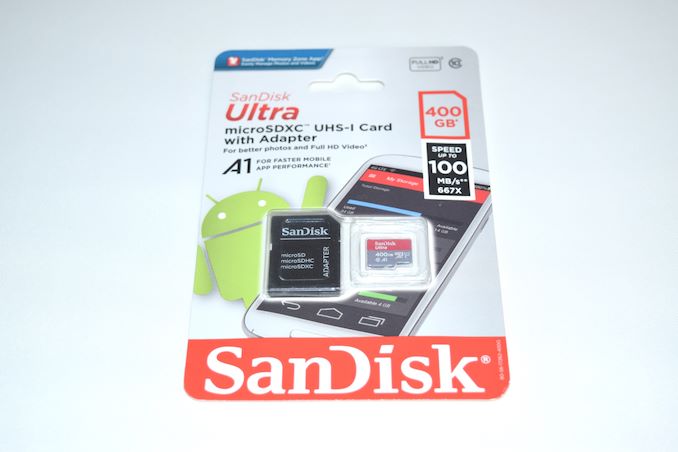

 Quote
Quote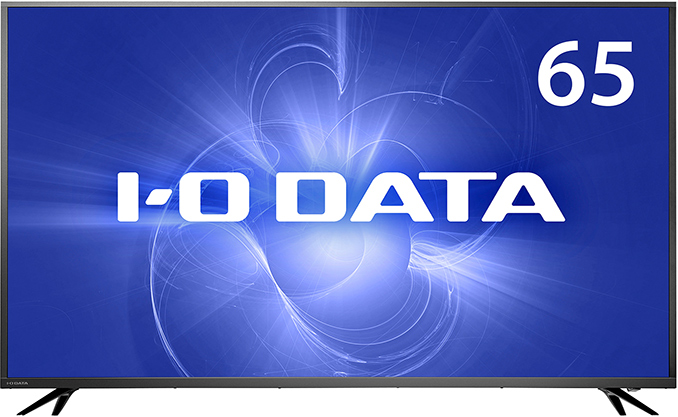
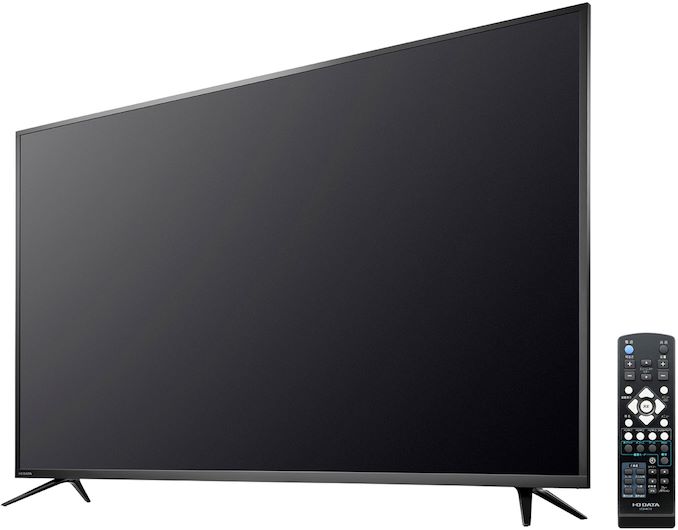
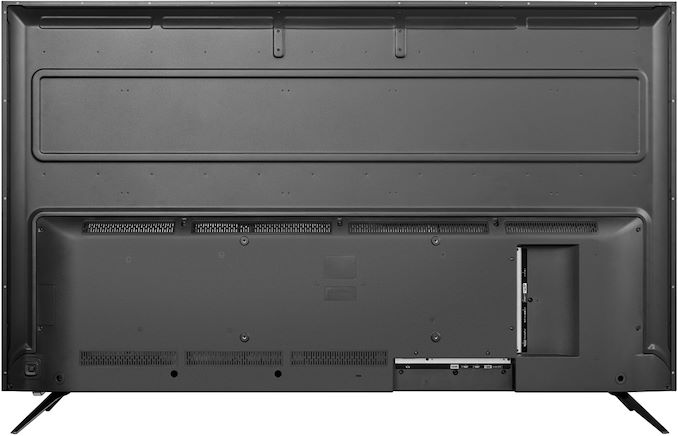
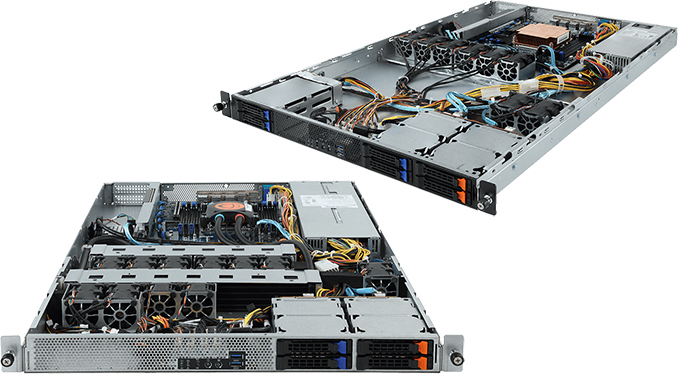
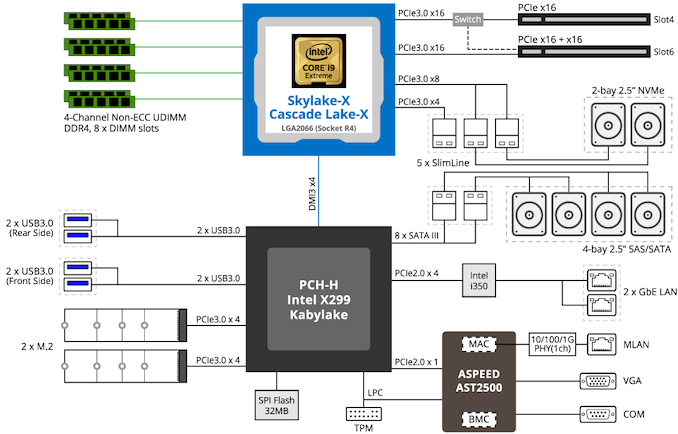
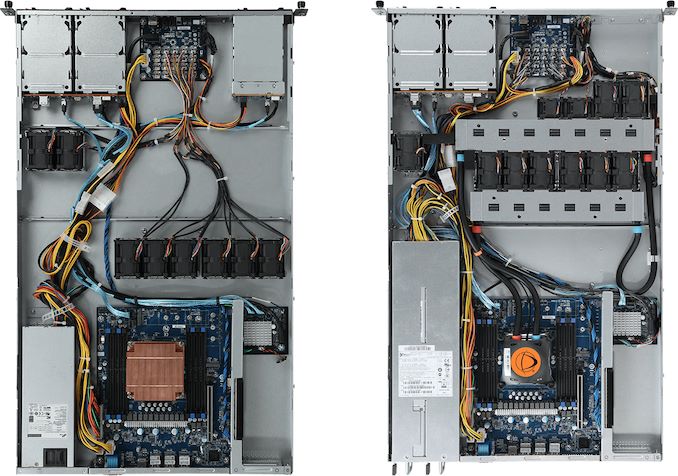
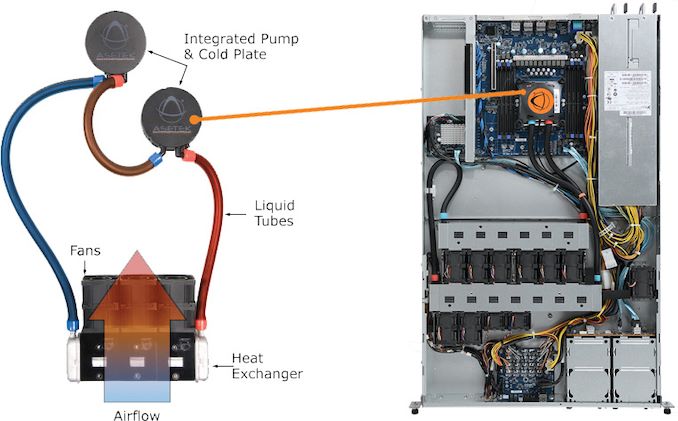
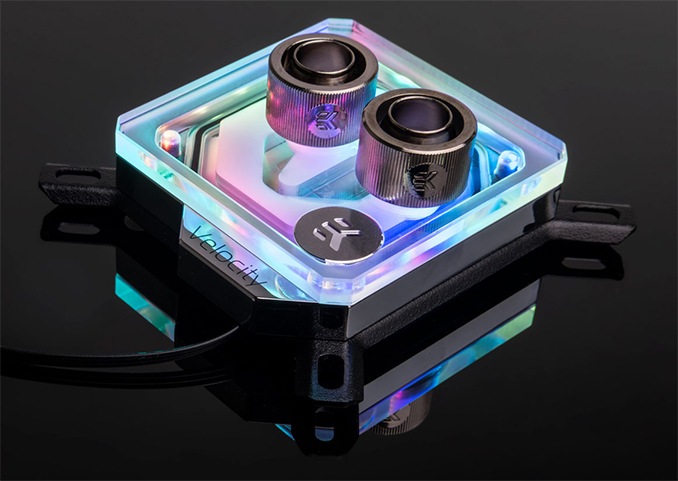
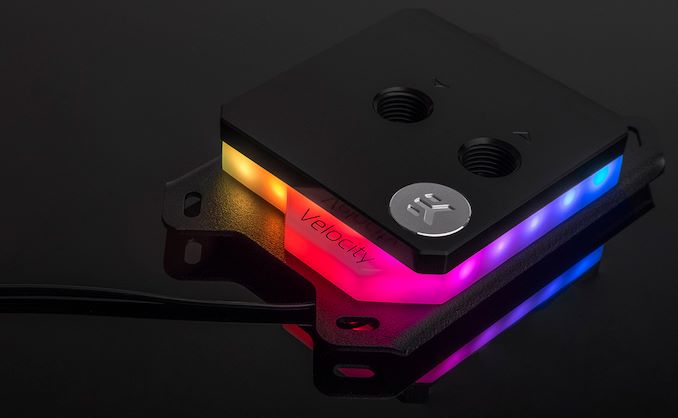
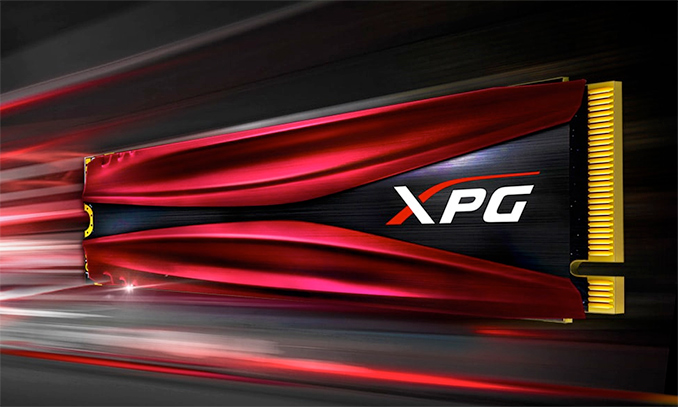
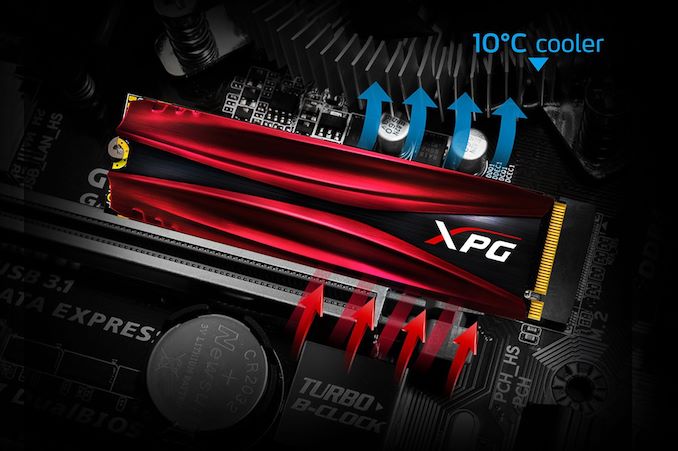
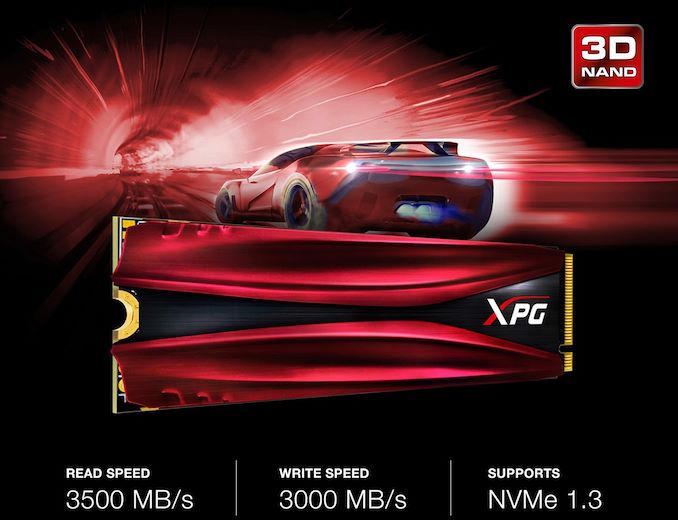
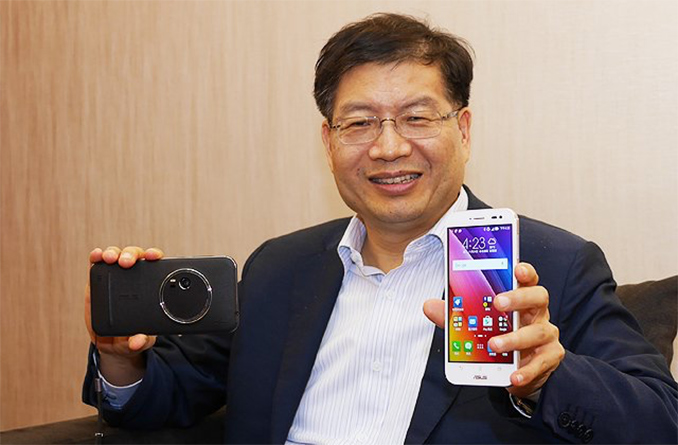


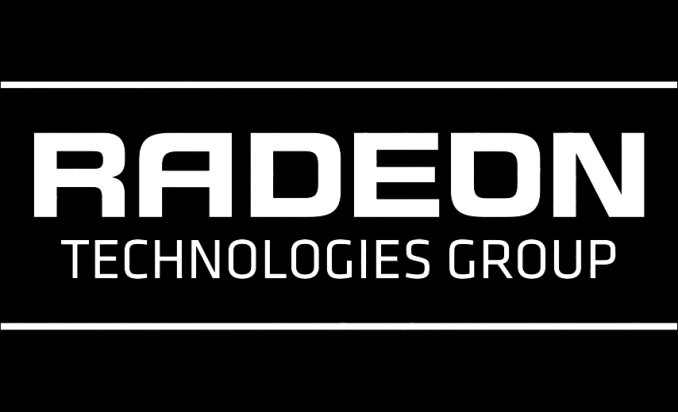


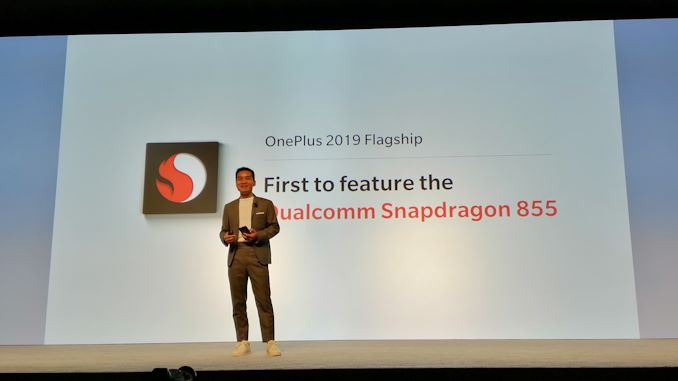
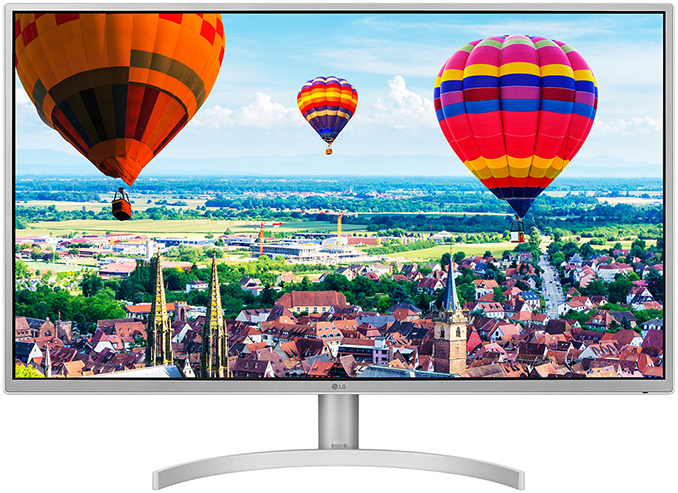
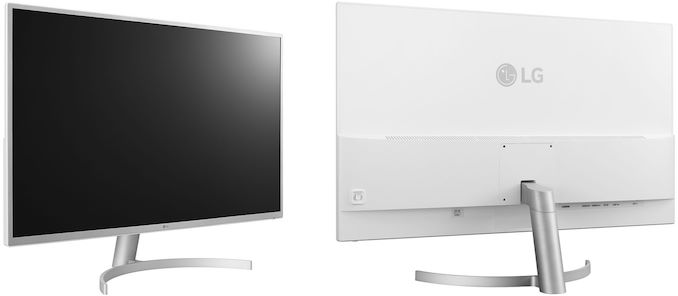
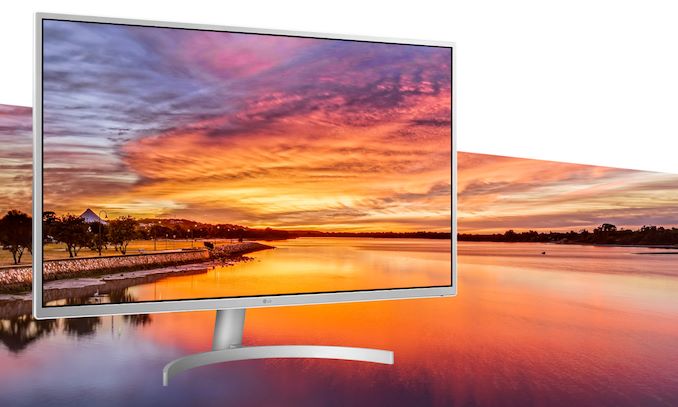
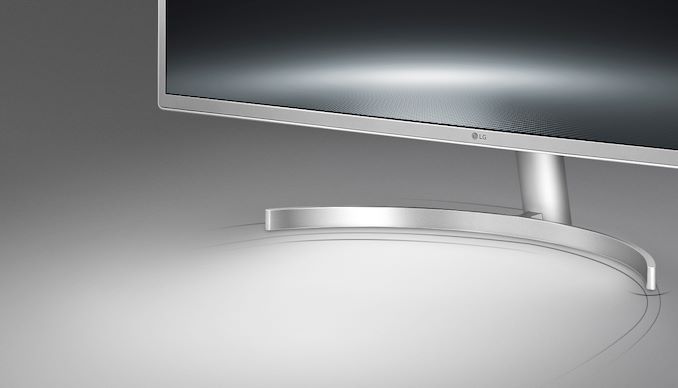
















Bookmarks